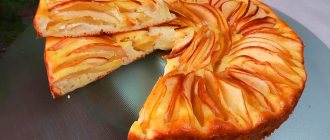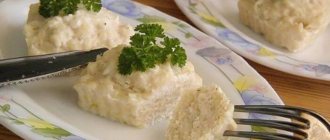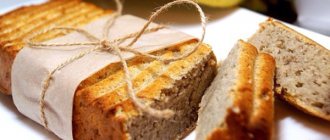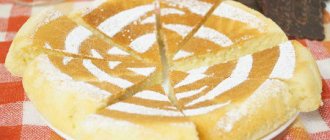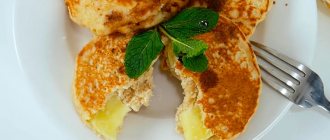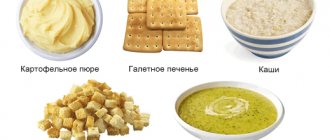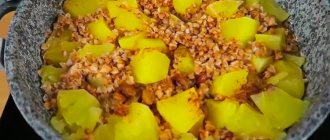Principles and rules of diet for children
When starting to create a menu for a child, you need to adhere to a number of rules. They will make the diet as effective as possible.
- A child needs vitamins, minerals and other useful substances, which he can only get from food. It is important that the menu is not devoid of fats, proteins and carbohydrates. Deficiency of nutrients is unacceptable.
- A child should not experience hunger that is unacceptable to him.
- A child should not be allowed to be completely deprived of sweets, despite the fact that he is on a diet. However, they should be useful.
- A children's diet cannot be strict. This is contrary to all medical principles. There are no indications for a strict diet for children.
The principles on which any children's diet is built:
- A balanced menu, with an emphasis on protein products. They should be at least 50% in the daily diet.
- Compliance with the caloric content of dishes according to the age characteristics of the body.
- Lack of foods on the menu that contribute to weight gain.
In addition to all of the above principles and rules for creating a children's diet, it is also necessary to take into account the following recommendations:
- You need to eat 5-6 times a day.
- During the day you need to distribute products correctly:
- At breakfast, the child should eat 25% of the daily diet.
- During lunch – 10%.
- Lunch accounts for 40%.
- For afternoon tea – 5%.
- At dinner he eats 20% of the entire menu offered.
- Before lunch, the menu should be dominated by protein products, and in the evening - vegetables and cereals.
- You can’t eat a lot without following a regimen.
- Children should eat foods that are gently cooked. You can steam, bake, stew and boil.
If there are no medical indications, then a child under 5 years of age cannot be allowed to follow a diet. Limiting the food supply can lead to a failure in the absorption of nutrients, disrupt metabolism, and therefore provoke excess body weight gain. A young child should eat properly and should not be offered unhealthy foods or sweet carbonated water.
Basic principles of dietary nutrition
To improve children's digestion and prevent stool retention, you need to properly adjust the diet. The basic rule of a therapeutic diet for constipation in children is to increase the proportion of foods rich in dietary fiber (fiber). It not only stimulates intestinal peristalsis, but also provides a breeding ground for the growth of beneficial microflora7.
Below are the main principles of the diet:
- eat often, but in small portions. The baby should have 3 main meals (breakfast, lunch, dinner) and 2 snacks between them (2nd breakfast, afternoon snack);
- For children over 2 years old, take their last meal no later than 2 hours before going to bed;
- a sufficiently high-calorie breakfast is required, which promotes reflex bowel movement in the first half of the day;
- during snacks it is necessary to give fresh fruits and berries;
- It is useful to include vegetables, fermented milk dishes, and cereals in the menu every day.
Permitted and prohibited products
Products that are allowed to be eaten during the children's diet:
- Meat: beef, rabbit, turkey, nutria, chicken, offal, homemade liver pate.
- Chicken eggs, quail eggs.
- Cereals: oatmeal, buckwheat, rice, millet, pearl barley, corn grits.
- Legumes, vegetables, greens.
- Milk and fermented milk drinks and products.
- Berries and fruits.
- Rye bread, bran bread.
- Fresh juices made from fresh fruits, nectars, fruit drinks, jelly, uzvar, cocoa, green tea, herbal decoction, rosehip infusion, still mineral water.
Products that a child can consume in limited quantities:
- Chocolate, marmalade and marshmallows.
- Vegetable oil used for salad dressing.
- You can add butter to porridge.
Sweet foods should be given to the child in the first half of the day and in small quantities.
Products that are prohibited from using when compiling a children's menu:
- Smoked meats.
- Canned food.
- Baked goods, sparkling water.
- Semi-finished products.
- Sausages.
- Fast food.
- Fried pies.
- Crackers, nuts and chips.
Menu for the day
You need to know about the features of the diet:
- The daily menu should include one meal of porridge, it’s good if two vegetables;
- protein foods are given in the first half of the day, they cannot be combined with fats;
- The first course must be served at lunch;
- for dinner - milk-vegetable food;
- A variety of diet is important, so you should not give the same dishes more often than every three days.
Let's look at the approximate menu for the day.
- Breakfast:
- milk porridge around 200 g;
- cocoa boiled in water with a little milk added;
- 30 grams of cookies.
- Lunch:
- cottage cheese casserole about 100 grams;
- fruit juice - glass.
- Dinner:
- a plate of soup with meat broth;
- a portion of mashed potatoes and boiled meat;
- vegetable salad - 50 grams;
- slice of bread;
- a glass of compote.
- Afternoon snack:
- a glass of kefir;
- raw fruit.
- Dinner:
- a plate of vegetable stew;
- two slices of bread;
- a glass of kefir.
Sample menu for a week's diet for children
The proposed menu is balanced. It allows you to lose 1 kg of weight in a week, and there will be no harm to children’s health. During the diet, it is important to ensure that the child drinks enough water and also engages in physical activity.
| Diet day | Breakfast | Snack | Dinner | Dinner |
| 1 | Steam omelet based on 1 egg, skim milk and rice, fresh apple | Wholemeal toast with butter, low-fat cheese, cucumber, compote with dried fruits | Steamed potatoes, steamed chicken liver, greens, fresh carrots | Muesli, salad with boiled beets and walnuts with sour cream dressing, cocoa |
| 2 | Pancakes with semolina, apple, green tea with lemon | Greek salad, boiled egg, fresh orange | Soup with meatballs and buckwheat, whole grain toast | Cabbage-carrot salad with grated apple and sour cream, fruit jelly |
| 3 | Salad with boiled rice, egg and squid, pomegranate juice | Steamed fish balls, milkshake with strawberries and bananas | Fish soup, stewed cabbage with chicken hearts, berry juice | Rice porridge with raisins, fruit salad with yogurt, orange juice |
| 4 | Steam omelette with mushrooms, chicken fillet and celery, whole grain toast, green tea | Cottage cheese with fruit | Borscht with chicken, vinaigrette, fresh apple | Muesli, berry jelly and pear |
| 5 | Pumpkin porridge and uzvar | Baked apple, berries | Green borscht with beef, salad with fresh vegetables, orange juice | Corn porridge with raisins, yogurt |
What foods are allowed to be consumed using this method?
Diet number 8 is based on fractional meals. According to this technique, the consumption of carbohydrates and baked goods is reduced to a minimum, so it is recommended even for 3rd degree obesity. The daily menu practically does not include foods rich in sodium chloride, which stimulate the appetite, as well as free liquid. During the day, you are allowed to drink approximately 4.5-5 glasses of liquid, including first courses, and you will have to completely stop drinking alcoholic beverages.
The following foods are allowed to be consumed using this method:
- Bakery products made from rye flour or wholemeal flour, no more than 170 g per day.
- First courses are necessarily used in the daily diet, but preference should be given to vegetable ones, to which it is advisable to add a little grain, for example, buckwheat. You can prepare soup with meatballs from dietary meat once a week; a serving of such soup should not exceed 250 g.
- Vegetable dishes and a side dish of cereals are welcome in this method. Vegetables can be served either raw or boiled. It is recommended to give preference
- radishes and cucumbers;
- pumpkin and zucchini;
- carrots and tomatoes;
- turnips and various salads.
The above vegetables should be steamed. As a side dish, you can serve boiled potatoes, crumbly porridge, seasoned with vegetable oil.
And you should avoid salted or pickled vegetables altogether.
- Dishes made from barley, buckwheat or pearl barley, seasoned with steamed vegetables, can perfectly diversify your daily diet according to diet number 8. But if cereal dishes are on the table, you will have to give up baked goods.
- Meat dishes should be made from dietary meat; it is best to give preference to beef or veal. It is recommended to boil the meat in one piece or bake it in the oven. Throughout the day, you can eat about 170 g of lean meat or fish.
Eggs are allowed to be consumed using this method, either boiled or in the form of an omelet, but no more than two per day.- Dairy products are allowed to be consumed in any form, but preference should be given to low-fat products or with a minimum percentage of fat content. It is recommended to replace butter with vegetable oil, and use non-spicy cheese varieties.
- Fruits and berries should be included in the diet, but unsweetened fruits should be consumed; compotes should be prepared without sugar; instead, you can use a little natural honey as a sweetener.
During the day, as previously mentioned, you can drink no more than 1 liter of water.
The following foods are not allowed to be included in the daily diet:
- sweet pastries and bread made from premium quality flour;
- pasta;
- fatty meat and fish;
- various types of sausages, sausages and canned food;
- sweet fruits, any kind of dried fruits;
- concentrated juices, heavily sweetened drinks.
Alcohol of any strength should be completely excluded from the diet
Delicious recipes
Pilaf with dried fruits
- You can take any dried fruit in a volume of 150 g. This can be prunes, dates, dried apricots or raisins. You will also need 0.3 kg of nuts - cashews, almonds or walnuts.
- Rice should be long grain, its volume is 0.7 kg. Soak the rice for an hour in salted hot water.
- When the rice can be easily crushed with your fingernail, it is ready for further processing. If the cereal is too hard, then drain the water and pour boiling water over the rice again.
- While the rice is being prepared, finely chop the carrots and cut the onions into feathers.
- Onions are fried in vegetable oil until golden brown.
- Carrots are fried in butter.
- Place onions, rice, carrots in a cauldron, fill with water so that its level rises one finger above the rice. Salt the dish, add barberry and cumin.
- Do not cover the cauldron; cook the pilaf over high heat until all the liquid has evaporated.
- Dried fruits and nuts are fried in a frying pan with butter, placed in a cauldron with rice and covered with waffle towels and then with a lid.
- After 30 minutes the pilaf will be ready, it needs to be mixed and served.
Minestrone
- Finely chop the red onion and garlic clove.
- Cut 2 carrots, 2 celery trunks, a fennel tuber, 1 potato into cubes.
- Divide the leek into 2 halves, wash it thoroughly and cut it into slices 1 cm thick.
- Using a blender, grind 0.8 kg of canned tomatoes in their own juice.
- Fry zucchini, leeks, garlic, carrots, celery, and 1/4 teaspoon of dried oregano in olive oil. Then cover with a lid and simmer for another 15 minutes.
- Add potatoes, tomatoes and vegetable broth in an amount of 1 liter to the vegetables.
- Cook the soup for another 30 minutes.
- Cut 1 tomato, 1 zucchini and 1 sweet pepper into cubes, add them to the soup 10 minutes before the end of cooking. Along with the vegetables, add a can of canned beans to the dish.
- The soup is salted and peppered, served with basil leaves and grated Parmesan.
Soufflé with rabbit meat
- Boil 0.2 kg of rabbit meat.
- Soak 80 g of white bread crumb in milk.
- The meat and bread are passed through a blender, 4 chicken eggs are added to it and ground again.
- Fill muffin tins with minced meat and place on a baking sheet with water.
- Bake in the oven for a quarter of an hour at a temperature of 180 °C.
- Soufflé is eaten both hot and cold.
Fish quenelles
- Grind 0.35 fillets of low-fat white fish in a meat grinder.
- Dry the flour (2 teaspoons) in a frying pan, pour milk into the frying pan, stirring constantly so that no lumps form, and add salt.
- Add this sauce to minced fish. The yolk and separately beaten white are introduced there.
- Form the minced meat into balls and cook them until fully cooked.
- Separately, prepare the sauce for the quenelles: peel the peaches, remove their pits, and fry the onions with garlic and dried paprika in olive oil. After 5-8 minutes, add 3 tablespoons of lemon juice, 2 tablespoons of sugar to the onion, salt and pepper, fry for another 5 minutes, then add peaches to the pan and cook for 5-10 minutes. If the sauce turns out to be very thick, it can be diluted with water.
- When the sauce is ready, it is passed through a blender and served with the quenelles.
Soba noodle soup
- Soak 2 sheets of dried seaweed in 4 glasses of cold water for 20 minutes, boil the water and reduce the heat.
- Add 30 g of fish chips to the pan, cook for a few more minutes, strain the broth through cheesecloth.
- Separately, boil the soba noodles, following the instructions on the package, and rinse the finished noodles in cold water.
- Boil the eggs and peel them.
- Chopped champignons, a bunch of bok choy, and shrimp are added to the boiling broth left over from the seaweed.
- Place soba noodles on a plate, an egg cut into 2 parts, pour in broth, add bok choy.
- Garnish the soup with sesame seeds and green onions.
Therapeutic diets for children
Diet for children with allergies
If a child suffers from allergies grows up in a family, then he needs to follow a certain diet. Otherwise, the baby will be plagued by such health problems as: urticaria, allergic rhinitis, diathesis, conjunctivitis.
However, despite the fact that the child needs to adhere to dietary nutrition, his diet must be complete. Parents should definitely know which foods are more allergenic and which are less allergenic.
Thus, the products that most often cause allergic reactions include: eggs and milk, citrus fruits, berries (raspberries, strawberries, strawberries), wheat and rye, chocolate, coffee, honey, cocoa, nuts.
Products that have an average allergenic potential: potatoes, legumes, beets, apricots, peaches, bananas, blueberries, black currants.
The menu of a child with allergies should be based on products such as:
- Fermented milk drinks and products.
- Meat: low-fat pork, lamb, turkey, rabbit, horse meat.
- Green apples and pears.
- Dill and parsley.
- White and cauliflower cabbage, cucumbers and zucchini, yellow cherries.
The products on this list have minimal allergenic potential, so they can be offered to a child with allergies.
Read more: Diet for allergies
For rotavirus infection
Rotavirus infection (intestinal flu) is a disease that can affect not only children, but also adults. However, it is young children who are most often infected. Intestinal flu is indicated by symptoms such as: disturbances in the functioning of the digestive system (diarrhea, vomiting, abdominal pain), high body temperature.
Rules for feeding a child with rotavirus infection:
- It is important to ensure that your child does not become dehydrated. To normalize the electrolyte balance, the baby is offered Regidron, but often children refuse to take it because it has a specific taste. Therefore, you need to give your child as much water as possible, weak tea, you can drink compote, decoctions of mint and chamomile.
- If the child does not ask to eat, then there is no need to force him. The main thing is that he drinks enough.
- You need to drink in small portions so as not to provoke vomiting.
In the first 2-3 days, every effort should be made to normalize the child’s stool. Therefore, you can offer him lean rice porridge and stewed apples.
In the future, the menu will be expanded to include the following products:
- Biscuits, crackers.
- Vegetable broth. Fish and meat broth is only low-fat; for this, after boiling, drain the water, pour in clean broth and continue to cook the food.
- Soup with cereals that must be thoroughly boiled.
- Steam omelette.
- Steamed chicken or turkey cutlets, boiled fish fillet. You can use fish such as pollock, cod and hake.
- Mashed potatoes. No oil is added to it.
After 3-4 days from stool normalization, fermented milk drinks can be introduced into the child’s diet. Any products that could provoke disturbances in the functioning of the digestive system should be removed from the menu. You should not give your child milk, cheese, sugar, honey, brown bread, pastries, pasta, dumplings, dumplings, legumes, fatty fish and meat, sausage, smoked products, chocolate, cocoa, coffee, strong black tea.
Only after 10 days can you transfer the child to the usual menu. Until all the symptoms of rotavirus infection are eliminated, he must adhere to a diet.
Read more: Intestinal infection in children: what to do?
When vomiting
If a child is vomiting, he will lose a lot of fluid. As temperatures rise, the situation is getting worse. During the first day the baby is not fed, but he must be given water frequently. You can give herbal tea, rosehip decoction, unsweetened mineral water without carbon. The child should drink in small portions, but as often as possible.
When the vomiting stops, you need to start feeding the baby. You should follow a gentle diet. Products that should be excluded from the menu:
- Fried foods.
- Fresh fruits and vegetables, natural juices.
- Oils: butter and sunflower.
- Sausages and smoked products.
- Rolls, confectionery, sweets and baked goods.
- Sparkling water.
- Yachka, pearl barley and millet.
In order for the gastrointestinal tract to recover faster, the menu should be based on foods that are easily digestible:
- Baked apples.
- Bananas.
- Compote with dried fruits and rosehip decoction.
- Boiled grated vegetables. Preference should be given to carrots and apples.
All dishes must be warm. Food that is too hot or too cold will irritate the stomach and slow down the healing process.
Read more: Vomiting in a child without fever and without diarrhea
For urticaria
For urticaria, the child’s menu should be based on hypoallergenic products. At the age of up to 1.5 years, the child’s nutrition should be “rejuvenated”, that is, if an allergic reaction occurs, his menu is transferred back to the previous level. This must be done until a complete recovery occurs.
The following foods are removed from the diet:
- Citrus.
- Chocolate and all products containing cocoa.
- Mushrooms.
- Nuts.
- Products that have undergone a smoking process.
For urticaria, a child can receive the following foods:
- Fermented milk drinks and low-fat products: kefir, sour cream, yogurt, cottage cheese. It is important to purchase only natural products that do not contain dyes, additives or preservatives.
- Cereals: corn, rice, buckwheat. You need to cook porridge in water.
- Boiled meat: beef, poultry. It is important to choose lean meats.
- Baked vegetables and apples.
- Vegetable soups.
- Green apples, pears, grapes.
In addition to the fact that the child is brought to a specialized menu, he must receive drug therapy. Only a doctor can prescribe treatment. If you ignore taking medications, urticaria will become chronic.
Read more: Urticaria - causes and symptoms
For atopic dermatitis
Atopic dermatitis requires avoiding eating foods that contain dyes and food additives. If it has been established which food components lead to an allergic reaction, they must be discarded. Provided that the baby is fed breast milk, the nursing mother should monitor her menu with special care.
The baby should eat according to the diet, but he should not be overfed.
Products that may be present on the child's menu:
- Dairy products. You can offer your child one-day kefir.
- Porridges that do not contain gluten: rice, corn, buckwheat.
- Vegetable soups, broths based on beef tenderloin.
- Baked apples.
- Boiled potatoes.
- Black bread,
- Dill and parsley.
Doctors strongly recommend removing all baked goods from the child’s menu. On an industrial scale, margarine is used for their production, which is strictly prohibited for consumption in this form of dermatitis.
Read more: Atopic dermatitis in adults and children
For pyelonephritis
Treatment of pyelonephritis is aimed at removing intoxication from the body. Therefore, the child should receive as much fluid as possible. It is allowed to give him fruit drinks, compotes, herbal decoctions, weakly brewed black tea, infusions of rose hips, rowan and black currant.
You should also include fruits and vegetables in your child’s diet, which have a diuretic effect. These can be zucchini, melons and watermelons.
You can offer your child dairy products, confectionery, cereals, sugar, and dried fruits.
The following are prohibited:
- Smoked products.
- Coffee and cocoa.
- Chocolate.
- Fried foods.
- Spices and seasonings.
- Spinach and cauliflower.
- Mushrooms.
- Meat and fish, as well as broths prepared on their basis.
Gluten-free diet
A gluten-free diet requires avoiding all foods that contain gluten - oats, rye, wheat, barley. Children with autism must adhere to a menu that does not contain gluten-containing grains.
There is also a ban on chocolate and any baked goods. When a child enters kindergarten, parents must notify its management about the existing problem.
Read more: List of gluten-free and gluten-containing products
Basic principles of diet for obesity
The main requirements that must be met when prescribing dietary nutrition for obesity:
- food should be varied with a sufficient amount of vitamins and microelements;
- the diet should not contain spicy seasonings that increase the secretion of gastric juice and appetite, all products containing taste enhancers;
- food should be steamed, boiled, baked, or raw (salads);
- The amount of easily digestible carbohydrates (sucrose) is significantly reduced.
When choosing foods, great importance should be given to the so-called glycemic index of carbohydrates (GII), i.e. their ability to increase blood sugar levels compared to glucose (glucose is considered 100%). Thus, according to the French nutritionist M. Mortignac, all carbohydrates can be divided into “good” (GIU<50) and “bad” (GIU>50).
The combination of simple carbohydrates and fats in one product (or one meal) is especially undesirable. Cakes and ice cream make you gain weight not because they contain sugar, but because they combine sugar with fat. Simple carbohydrates stimulate the production of insulin, which promotes the deposition (deposition) of the fats that come with them.
Necessary conditions for a positive result in the treatment of obesity:
- compliance with the diet and daily routine, with an obligatory emphasis on the need for the peak of appetite to occur in the first half of the day (in the absence of this reflex, it must be gradually developed in the child;
- the normal volume per feeding or daily volume of food must be observed;
- a slow pace of eating, in which the feeling of fullness comes faster and from a smaller volume of food;
- correct distribution of calories during the day;
- regulation of the quantitative composition of the diet: gradual, but ultimately significant limitation of sweets and confectionery, cereals, bakery and potato products, limitation of refractory fats and maintaining a normal amount of protein;
- special attention is paid to the water-salt regime;
- constant parental and medical monitoring of changes in the child’s weight, monitoring the effectiveness of treatment;
- gradual transfer of a sick child to a diet appropriate for his age and degree of obesity.
Norms of daily food volume
| Child's age | Volume of daily ration (ml) |
| 1 - 1.5 years | 1000 — 1100 |
| 1.5 - 3 years | 1200 — 1300 |
| 35 years | 1300 — 1500 |
| 5 – 7 years | 1600 — 1800 |
| 7 – 11 years | 2000 — 2200 |
| 11 – 15 years | 2300 — 2500 |
What foods should be limited, the “food traffic light” rule
The best approach to feeding obese children is the “food traffic light” method.
The essence of the method comes down to the primary consumption of low-calorie foods.
The daily calorie intake is 1200 kcal, with subsequent increases.
Products are divided into three categories: “green”, “yellow” and “red”.
Low-calorie foods (most vegetables and fruits) are considered “green” and are recommended for frequent consumption:
| 1. Cabbage 2. Green salads 3. Cucumbers 4. Tomatoes 5. Squash 6. Eggplants 7. Carrots 8. Greens 9. Apples 10. Citrus fruits 11. Strawberries and currants 12. Olive oil 13. Seafood 14. Boiled fish 15. Low-fat yoghurts 16. Kefir, yogurt, ayran 17 Boiled eggs “in a bag” (up to 2 pieces) |
Foods with moderate calorie content (such as grains) are considered “yellow” and their use is limited.
| 1. Pasta from durum wheat 2. Porridge with water (except semolina) 3. Baking from unsweetened puff pastry 4. Boiled potatoes 5. Low-fat meat products 6. Boiled sausage 7. Dark chocolate 8. Marshmallow and marmalade, marshmallows 9. Hard cheese 10. Cottage cheese 11. Sweet fruits and dried fruits 12. Spices 13. Ketchup and pickles 14. Tea |
“Red” high-calorie foods are subject to sharp restrictions.
| 1. Fast food 2. Mayonnaise 3. Processed cheese 4. Fat sour cream 5. Fatty meat (pork, fatty poultry) 6. Smoked meats 7. Cakes and pastries with cream and butter 8. Yeast pastries 9. White bread 10. Carbonated and sweet drinks |
